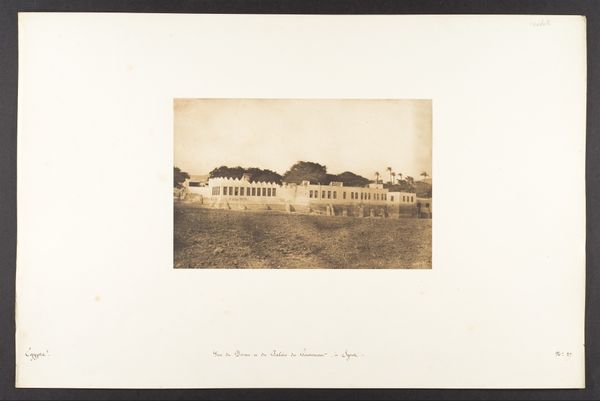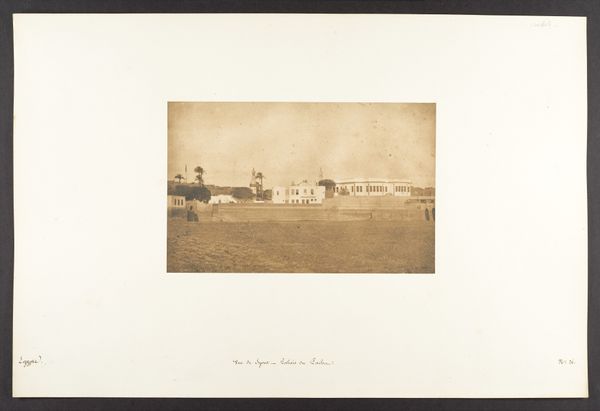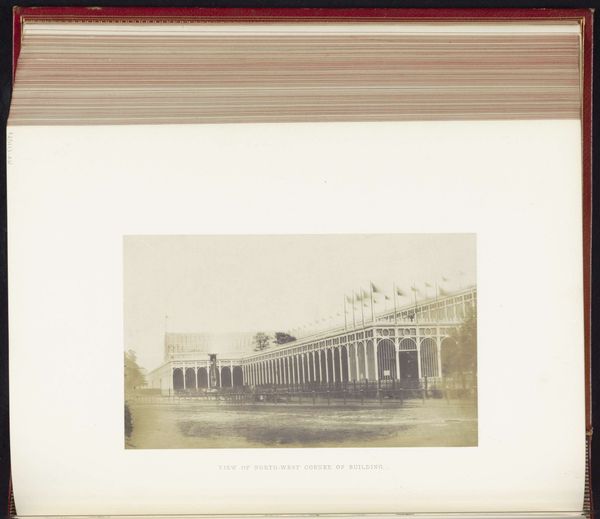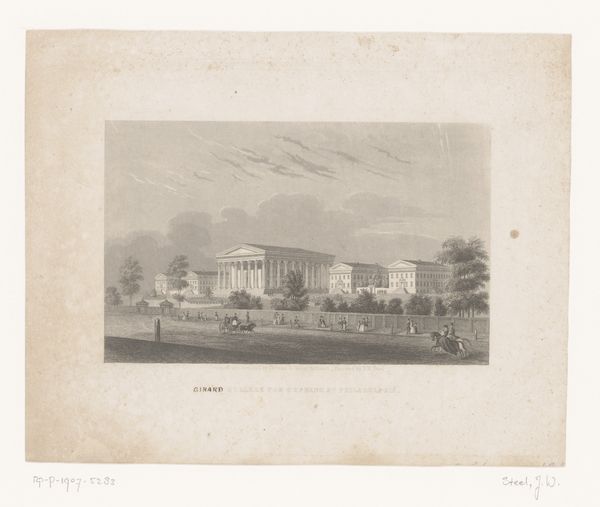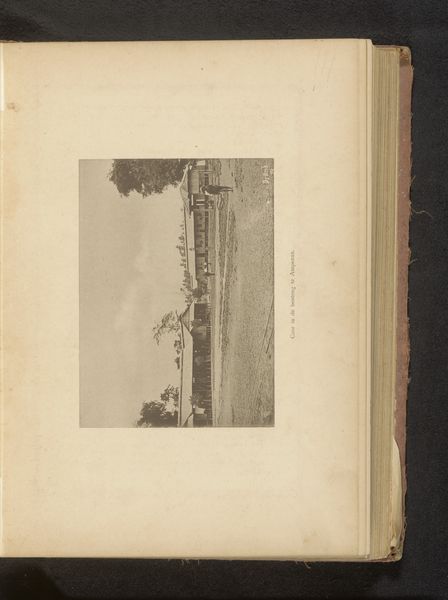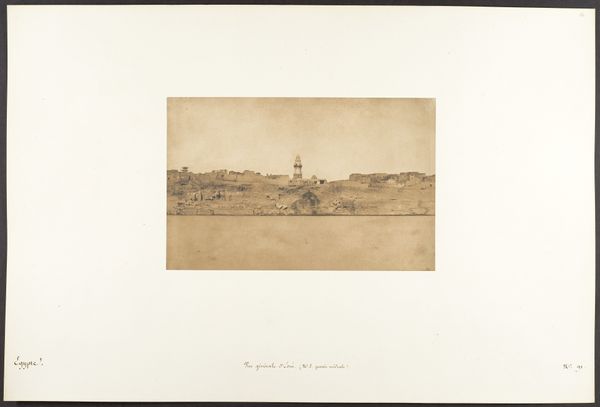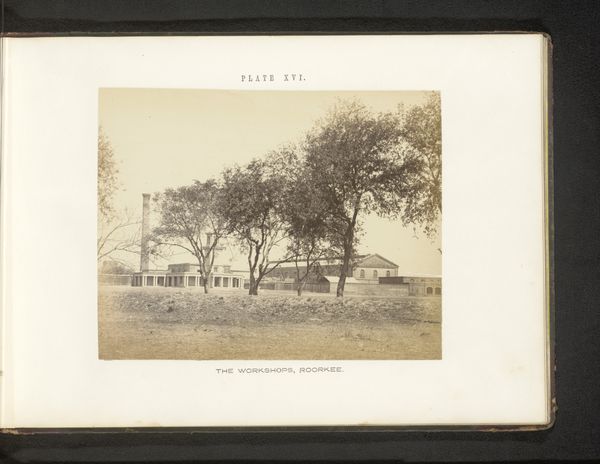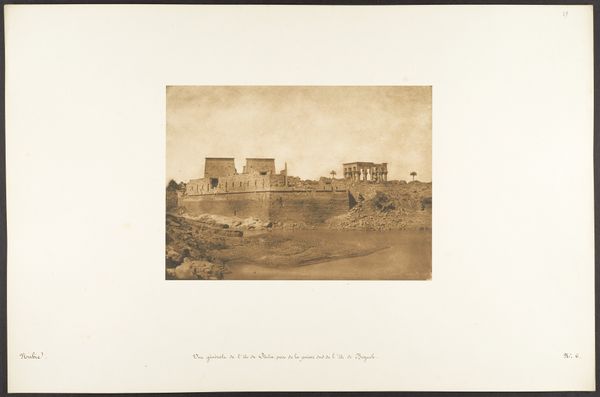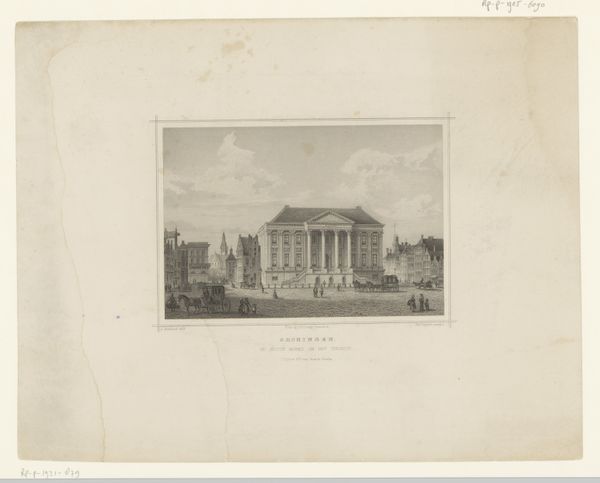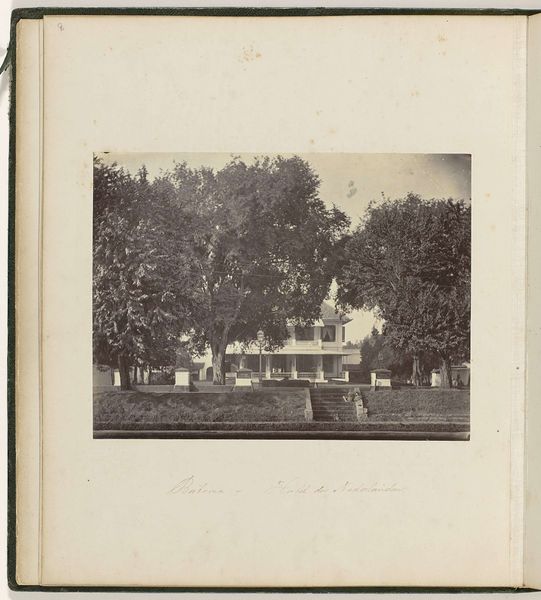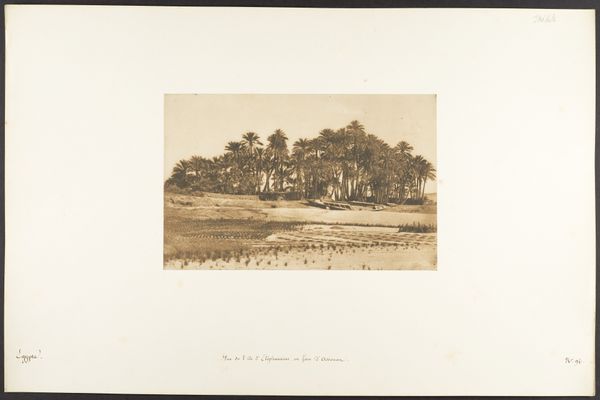
photography, architecture
#
landscape
#
photography
#
arch
#
architecture
Dimensions: Image: 5 13/16 × 8 7/16 in. (14.8 × 21.5 cm) Mount: 12 5/16 × 18 11/16 in. (31.2 × 47.5 cm)
Copyright: Public Domain
Editor: Here we have Maxime Du Camp's photograph, "Palais de Mehemet-Ali, à Esnè," taken between 1849 and 1850. It's currently held at the Metropolitan Museum of Art. What strikes me most is the contrast between the imposing architecture and the flatness of the landscape. What do you see in this piece? Curator: The stark linearity of the palace, evidenced by the repeating archways, provides a clear structure. Consider the formal arrangement—the foreground’s textural variations drawing the eye inexorably towards the clearly defined geometry of the building itself. Observe how the architectonic form is presented in relation to the relatively untouched, open space. How do you see the interplay between these shapes affecting the overall visual experience? Editor: I hadn’t thought about it that way. So, the way the foreground pulls you towards the building influences the viewer's experience of the building's form? Curator: Precisely. The artist positions the architecture in relationship to this foreground space, utilizing elements of contrast and scale to guide the viewer’s perception of form. What assumptions, would you argue, does this image make about the nature of beholding, of viewership? Editor: Hmmm… maybe that clarity and simplicity are vital in viewing? It's about seeing essential structures without much distraction. Curator: A promising analysis. By carefully studying the interplay of shape, line, and texture within the composition, we find that it creates a viewing experience which highlights the architecture, demanding the viewer observe its essential characteristics. Editor: This has opened up a completely different way for me to consider photography as something more than representational. Curator: Agreed. Analyzing formal elements unlocks layers of meaning we often miss at first glance.
Comments
No comments
Be the first to comment and join the conversation on the ultimate creative platform.
